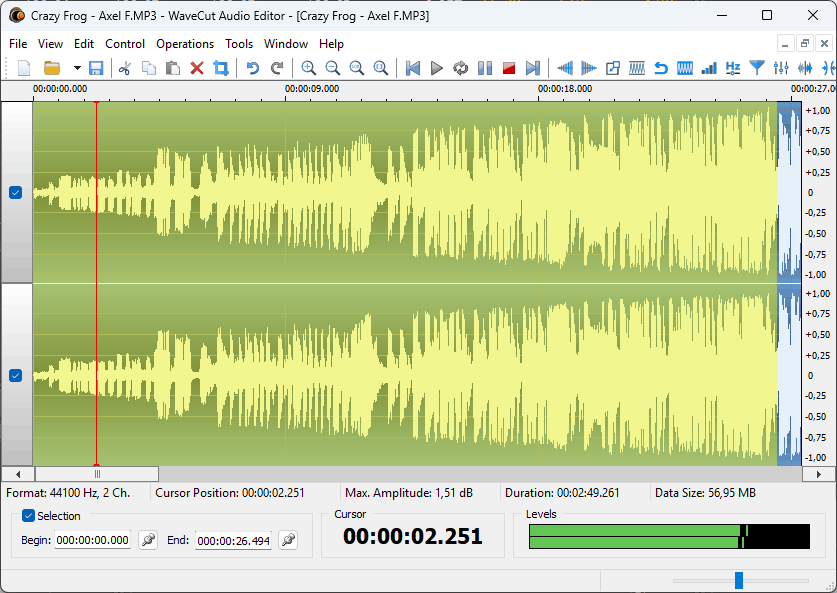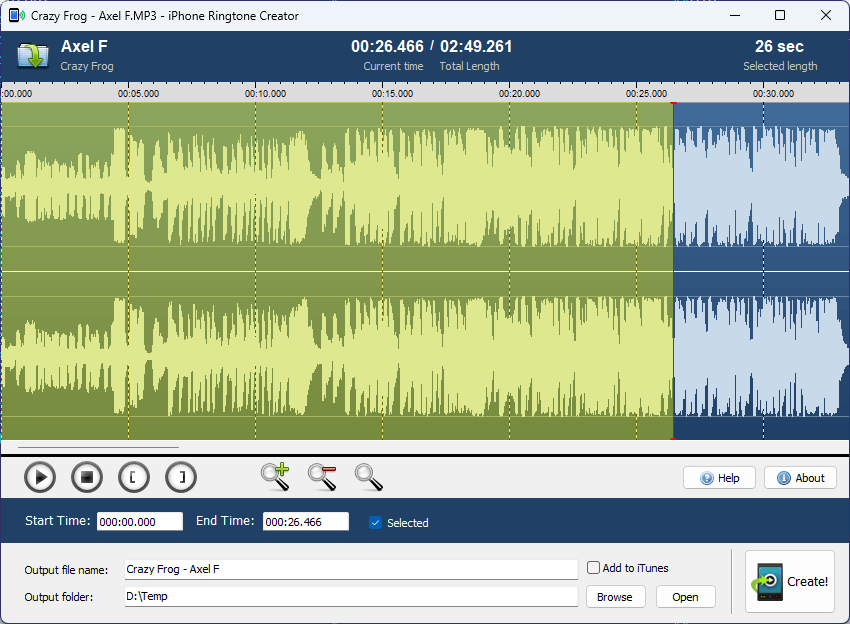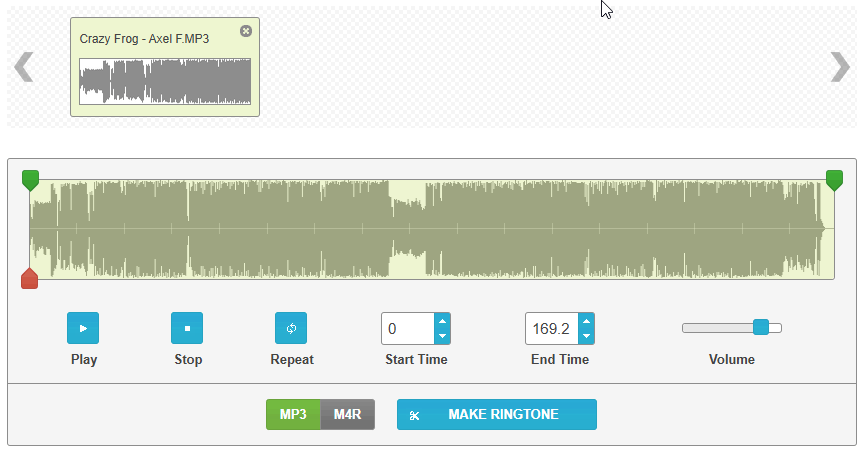
Ever since cellphones became popular, everyone has wanted to personalize their ringtones. The generic, instrumental tones that come preloaded on most phones just won't do the trick. Now it's even possible to assign individual ringtones to each saved contact, making ringtones a sort of auditory caller ID. And since new songs are always coming out, the world's library of ringtones is constantly growing.
Ringtones have become a billion-dollar business, with the musical files costing only as much as any other song on the Internet. Since MP3s are digital music files, they can easily be converted into ringtones for little to no cost at all!
In this guide, we'll explain the differences between ringtones on different platforms and which programs and services actually work.
1 Types of ringtones: Android and Apple
If you are making a ringtone for your phone, first of all you need to find out which audio formats it supports.
On Android, everything is simple: the system allows you to use almost any audio file, including MP3, WAV, OGG or even FLAC. The main thing is to put it in the right folder and select it in the settings as a future alarm clock.
But the iPhone is more finicky. It prefers the M4R format, which is essentially the same AAC in the M4A container, only with a different extension. In addition, Apple limits the duration of the ringtone to 30 seconds, otherwise the phone simply won't accept the file.
Interesting fact: Not all AAC codecs are the same, a proprietary codec from Apple or the Fraunhofer Institute provides clearer sound than free and open source implementations.
2 How to make a ringtone: three working methods
In general, it's not difficult to create a ringtone from a regular audio file. In the case of Android, you can do without any processing at all. For iOS, the main task will be to crop to a duration of 30 seconds. But still, for myself, I would prefer to trim the silence at the beginning of the melody and make the volume increase smoothly. There are several ways to perform these operations.
Method 1: Working in an audio editor
If you like precision and control, then it's best to use an audio editor. For example, WaveCut Audio Editor or free Wave Editor.
 How it works:
How it works:
- Open the MP3 in the program, select the desired section (preferably 20-30 seconds), remove unnecessary pauses and noises.
- Next, use the Fade-in effect to get a smoothly increasing volume.
- After processing, save the file in WAV or FLAC format if you plan further editing.
Free editors will most likely not have M4R support, so the file will need to be converted in any way that suits you. If the editor supports saving to M4A, then you can simply change its extension.
I liked that WaveCut allows you to select several volume curves that take into account the peculiarities of human hearing. The free editor increases the volume linearly and at the beginning such a ringtone will be barely audible.
From personal experience: I once tried to add an M4A ringtone downloaded from the Internet, but the iPhone simply did not accept the file. After checking the file properties, it turned out to be a regular MP3 file. Someone renamed the file instead of converting it. Unfortunately, it doesn't work that way.
Method 2: Using the iPhone Ringtone Creator program
If you often make ringtones, and your phone is an iPhone, then a specialized program, such as iPhone Ringtone Creator, will be the best choice.

This is a simplified audio editor that allows you to trim audio to the desired length, immediately save it to the desired format and add it to iTunes.
How it works: Download the program from the website, open your MP3 file, select the desired area and click Create. The program will check the parameters itself and adjust them to Apple's requirements.
I liked that this program does not require knowledge of codecs and formats — everything is done automatically. This is especially useful if you are making multiple ringtones at the same time.
Method 3: Create a ringtone through an online service
If you don't want to install anything, you can use an online service, for example mp3cut.net or ringtonemaker.com. These sites allow you to upload an audio file, select the desired fragment and save it as M4R or MP3 (on Android).

I've tried both options, but these tools don't perform any checks, and volume manipulation is very limited or nonexistent. The first option has limitations and runs ads in the free version. The second one turned out to be free, but incredibly slow. M4R uses a free faac codec with low sound quality.
In my opinion, they are quite enough for a one-time use. Some inconveniences are offset by the ease of use and the lack of the need to download and install anything.
3 Tips for working with ringtones
To make a good ringtone, you should pay attention to several points that beginners often miss.
First, don't make the ringtone too short or too long. The optimal time is 25-30 seconds to learn the melody, but do not wait for the end.
Secondly, remove the silence at the beginning and end, especially if you are taking a fragment from a song. This will make the ringtone clearer and more professional.
Third: use volume normalization, especially if you are making a ringtone from an old archive or recording with a low signal level.
If you are making a meme ringtone from a phrase, it is better to use a voice fragment with background music, since a voice without music may sound too "dry".
4 Frequently Asked Questions
iPhone won't let me use my ringtoneThere are three main reasons for this: the audio file is saved in an unsupported format, is longer than 30 seconds, or has the wrong sampling rate (iPhone prefers 44.1 kHz/48 kHz over 22.05 or 96 kHz)
Is it possible to make a ringtone from any audio file?Of course. Modern software can convert sampling rates, formats, number of channels. You need to choose the right settings yourself or trust specialized software that will do it for you.
How do I check which format my phone supports?The easiest way is to download a ready-made ringtone and try to install it. If it does not appear in the list, it means that the format is not accepted.
Why is my ringtone too quiet?Because the volume was not normalized. Use an equalizer or compression to increase the signal strength.
5 Conclusion
Creating a ringtone is essentially just cutting audio. But to get a good ringtone, you need to choose the right duration, volume, and save it in the right format.
If you are making a ringtone for yourself, feel free to use WaveCut Audio Editor to do everything quickly and efficiently. If you are making a ringtone for friends or for sale, it is better to save multiple versions so that it works on both Android and iPhone.
And most importantly, remember: the right ringtone is the one you like, and everything else is not important. So get down to business: discover your favorite song and start creating.
